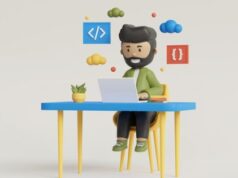The ongoing pandemic has caught the world off-guard. It is pushing businesses across the globe to adopt unprecedented working models, is driving immense social change and most notably, it is overburdening healthcare systems. Current efforts in supporting the pandemic situation are making great progress indeed, but can be further improved with the use of robotics, artificial intelligence and machine learning. By employing these new-age and advanced tools such as robotics software development in novel ways, the spread of the coronavirus can be better controlled and managed. Here’s how.


Current models for alleviating the pandemic situation
Robotics
The healthcare industry is rapidly adopting robotics and Artificial Intelligence (AI) to support and enhance their operations. As the physical contact between humans is severely restricted to prevent the spread of the contagious disease, various smart autonomous agents are being sought after to take up human-like activities. Thanks to an increase in robotics software consulting services, there are many efficient and accurate robotic devices being used in diagnosing COVID-19 patients and analyzing their samples.
The data collected in these processes are consolidated and stored on private databases away from public access. By not making the data publicly available, the speed of devising new and effective methods to pacify the virus is immensely slowed down.
The prediction of potential risks around the world can be better fine-tuned by building a global database that contains information from different nations. This dataset can include crucial details like what experimental treatments were used, what method of treatment was used and if there were any side effects documented.
Artificial Intelligence
The development of AI-assisted statistical tools are helping in predicting short, medium and long term requirements of healthcare resources and personnel. This helps plan and ensure that there are enough medical hands on deck at any given time. Every day there are many statistical publications on the growth of COVID-19. These results are supported by the use of Big Data and Artificial Intelligence technologies like Natural Language Processing (NLP) algorithms. They are trained to capture complex patterns in the data. This helps in forecasting potential COVID-19 outbreaks, relapses, recovery rates, death rates and more.
Although the current models are reliable enough, they do not take many factors into consideration. By also factoring in parameters like comorbid conditions, age, sex and region-specific characteristics, more accurate predictions can be made. These improvements in AI and Big Data algorithms can extend the capabilities of existing forecasting models.
Innovative robotic solutions to subdue the pandemic
Constant advancements in robotics software development have paved the way for incredible new-age devices that function with accuracy, enhanced safety and autonomy. The new line of robots in the market are especially suited to tackle present pandemic conditions. The types of robots include:
• Nursing robots
Patients affected with COVID-19 are kept in stringent isolation conditions for brief periods of time. In order to keep the virus from spreading, they aren’t allowed to see friends, family or visitors of any other kind. Moreover, with overloaded hospitals, clinical staff members find it extremely challenging to attend to patients on-time. These conditions can take a toll on their physical and emotional well-being.
The best way to combat this discrepancy is by employing autonomous robots. By deploying robots that can effectively communicate with patients while simultaneously analyzing their moods and behavior, patients can be kept engaged. Additionally, robots can also be great vehicles for medicine and food delivery.
• Sanitization robots
Continuous efforts to disinfect infection-prone areas are being undertaken everyday. Although this operation is carried out in the best interest of the public, it is expensive, laborious and time-consuming. Furthermore, it puts sanitation workers in risk of contracting the coronavirus. Instead, automated robots can be used for regular sanitization. In addition to spraying disinfecting chemicals, these robots can also be fitted with UV light emitters for enhanced sterilization.
By powering them with large and efficient batteries, advanced sensors and more, they can be deployed in places like public transportation hubs, offices, shopping areas, residential areas to effectively kill not only viruses but also other harmful germs, fungi and bacteria.
• Thermal imaging robots
One of the most significant symptoms of the highly-infection in nature virus is high temperature. This is a symptom that can be easily picked up by thermal imaging cameras. By integrating them on surveillance systems like CCTV cameras and drones, they can spot people with abnormally high temperature in public. Moreover, they have great use cases in commercial and residential areas. This can help drastically curtail the pandemic and in stopping the virus at its tracks.
Summing up
Robots integrated with cutting-edge Artificial Intelligence (AI) and Machine Learning (ML) are great contact-free alternatives during this pandemic. They can autonomously and semi-autonomously perform a myriad of operations with accuracy and speed. While the world is employing various strategies to reduce the number of infections, the implementation of more robots can help rid the world of the dreaded virus at a faster pace. Build a cutting-edge robot by hiring excellent robotics software development solutions from SmartPoint. Contact them today.









